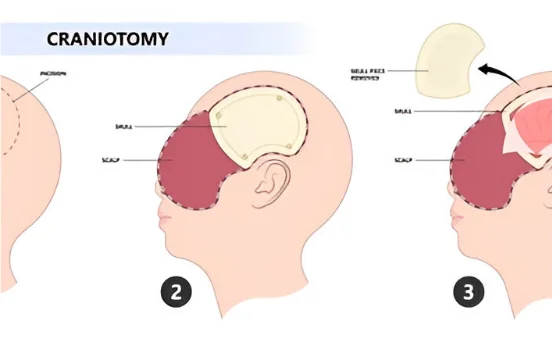Introduction
Endometriosis is a chronic and often painful condition that affects millions of women worldwide. It occurs when tissue similar to the lining of the uterus, known as endometrial tissue, begins to grow outside the uterus. This tissue can be found on the ovaries, fallopian tubes, outer surface of the uterus, and even the intestines and other pelvic organs. Despite being outside the uterus, this tissue responds to hormonal changes during the menstrual cycle, thickening, breaking down, and bleeding just like normal endometrial tissue. However, because this blood has no way to exit the body, it causes inflammation, pain, and the formation of scar tissue.
Recognizing the symptoms of endometriosis is crucial for timely diagnosis and treatment. Unfortunately, many women suffer for years before receiving an accurate diagnosis, as the symptoms can mimic other health issues or be dismissed as typical menstrual pain. Understanding the common signs of endometriosis empowers women to seek help and take control of their reproductive and overall health. Below are the key symptoms that women with endometriosis may experience.
Symptoms of Endometriosis
- Pelvic Pain and Cramping :- Pelvic pain is the most prevalent and often the most distressing symptom of endometriosis. This pain is typically associated with menstruation and may begin several days before a period starts and continue for several days afterward. The intensity of the pain can vary from mild discomfort to severe cramping that interferes with daily activities. It may feel like a deep, throbbing ache in the lower abdomen or pelvis. In some cases, the pain can radiate to the lower back and legs, further complicating the discomfort. Unlike typical menstrual cramps, the pain from endometriosis can be chronic and persist even when a woman is not menstruating. The reason behind this is that the endometrial-like tissue causes ongoing inflammation and irritation in surrounding areas.
- Pain During Intercourse :- Many women with endometriosis report experiencing pain during or after sexual intercourse, a condition medically known as dyspareunia. This symptom is particularly common when the endometrial tissue has formed on or near the lower uterus, cervix, or vaginal wall. The pain can range from a dull ache to sharp, stabbing sensations, and often discourages sexual activity due to fear of discomfort. The pain may be felt deep within the pelvis and is usually worse during certain positions or deeper penetration. This can take a toll on intimate relationships and emotional wellbeing, leading to stress, frustration, and even a reduced quality of life. Addressing this symptom requires open communication with healthcare providers and sometimes additional treatments to reduce inflammation and tissue growth.
- Painful Bowel Movements or Urination :- Endometriosis can affect organs near the uterus, including the bladder and intestines. When the disease involves these areas, it can cause pain during bowel movements or urination, especially during menstruation. Some women may feel pressure in the rectum, bloating, or even experience constipation or diarrhea. This type of pain can be mistaken for other gastrointestinal or urinary conditions such as irritable bowel syndrome (IBS) or urinary tract infections. However, if the discomfort is cyclical and intensifies during a period, it could indicate endometriosis. In rare cases, endometrial tissue can form directly on the bowel or bladder, causing more severe symptoms that may require surgical intervention.
- Excessive Menstrual Bleeding :- Heavy menstrual bleeding, or menorrhagia, is another hallmark symptom of endometriosis. Women with this condition often report unusually long or intense periods, sometimes requiring frequent changes of sanitary products or even double protection. Some women may also experience bleeding between periods, known as intermenstrual bleeding. The heavy flow can be accompanied by large blood clots, fatigue, and anemia due to blood loss. This excessive bleeding is not just inconvenient; it can significantly disrupt daily life and may indicate more extensive disease progression. Monitoring menstrual flow patterns and discussing them with a gynecologist can help in identifying endometriosis early.
- Infertility :- One of the most heartbreaking aspects of endometriosis for many women is its impact on fertility. It’s estimated that up to 50% of women with infertility may have endometriosis. The disease can interfere with conception in several ways, including damaging the ovaries, distorting the fallopian tubes, and creating scar tissue that prevents the egg and sperm from meeting. Even in less severe cases, the inflammation caused by endometriosis may negatively affect egg quality or the environment of the uterus. Women trying to conceive for an extended period without success, especially if they have other symptoms of endometriosis, should consult a fertility specialist. Early diagnosis and treatment can often improve fertility outcomes.
- Fatigue and Low Energy :- Endometriosis not only causes physical pain but also leads to fatigue that can be overwhelming. Chronic pain, heavy bleeding, and inflammation all contribute to feelings of exhaustion. Additionally, anemia caused by excessive blood loss can reduce oxygen levels in the body, leading to persistent tiredness. This constant fatigue can affect every aspect of a woman’s life, from her career and social interactions to her emotional wellbeing. Many women describe feeling as though they’re constantly battling low energy levels, which can also affect their mental health. Managing fatigue often requires a holistic approach, including medical treatment, diet adjustments, and emotional support.
- Digestive Problems :- Digestive symptoms are commonly reported by women with endometriosis, especially when the tissue affects the gastrointestinal tract. These issues can include bloating, nausea, constipation, diarrhea, and abdominal pain. Because these symptoms mimic those of other conditions such as IBS or food intolerances, endometriosis can often go undiagnosed for years. The key difference is that these digestive problems usually worsen during menstruation. Keeping track of the timing and severity of digestive issues in relation to the menstrual cycle can help distinguish endometriosis from other gastrointestinal conditions and aid in accurate diagnosis.
- Lower Back and Leg Pain :- Though less commonly recognized, endometriosis can also cause pain in the lower back and legs. This is often due to endometrial tissue affecting nerves in the pelvic region. The pain may radiate down the thighs and is usually one-sided, although it can occur on both sides in more severe cases. This symptom can be especially confusing for patients and doctors alike, as it may be mistaken for orthopedic or musculoskeletal issues. If the pain coincides with menstruation or is accompanied by other endometriosis symptoms, it’s important to bring it up during medical evaluations.
Conclusion
Endometriosis is a complex condition with symptoms that range from mild to severe and can affect many areas of the body. Recognizing these symptoms is the first step toward diagnosis and effective management. The earlier endometriosis is identified, the better the chances of reducing its long-term impact on health and fertility.
Living with undiagnosed endometriosis can be physically and emotionally draining, but no woman should have to suffer in silence. If you or someone you know is experiencing any of these symptoms, it’s important to seek medical advice from a qualified healthcare professional. Timely intervention, accurate diagnosis, and the right treatment plan can greatly improve quality of life.s























